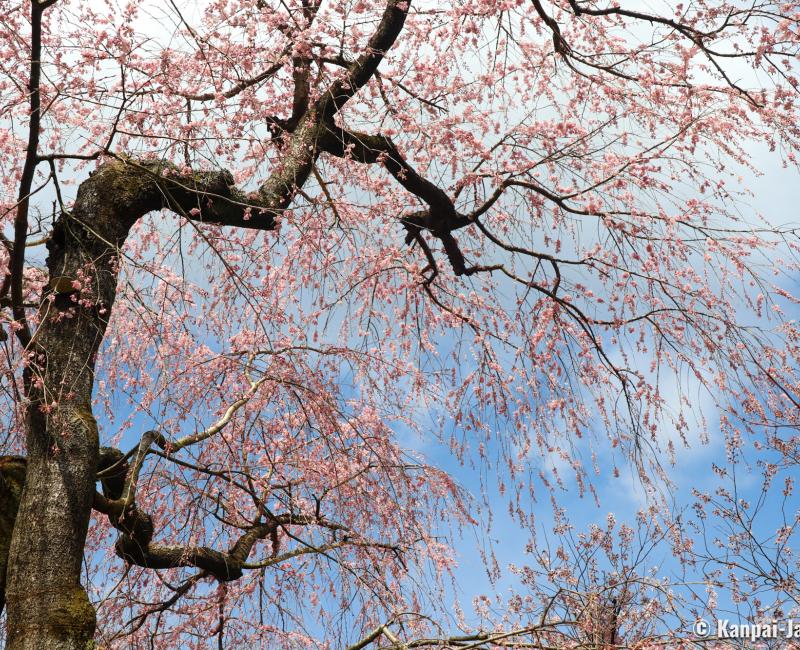Haradani-en
The Wild Cherry Trees Forest in Kyoto
Haradani-en is a private garden on a hill behind the Golden Pavilion, in the north-west of Kyoto. Only open to the public in spring and in autumn, it is renowned for its numerous weeping cherry trees that bloom quite late for the area: around mid-April.
Created during the postwar period, Haradani-en garden was initially a public landfill. Its owner’s attempts to grow vegetables being unsuccessful, several types of Japanese cherry trees and other species of spring flowers were planted and thrived over time. Seeing the pretty results, the owner decided to open the garden to the public. Haradani-en can be visited in only two occasions a year, whose precise time frame vary according to the progress of blooming:

Abundant nature in spring
Spring is the highlight of Haradani-en: it is the best period to admire the park completely covered in flowers, but also the moment when its narrow alleys are the most crowded. We recommend going on the morning of a weekday, to avoid the crowds of April’s sunny weekends.
The thick vegetation seems to be growing freely, such as a wild forest with pink and white hues. The sight is a pleasant change from the classical Japanese gardens that usually display a strong structure and are well-tended. Flowers are everywhere, on the side of the paths, at hands’ reach and above the head, floating in the sky. The sight is filled with:
- More than 400 flowering trees;
- About twenty different species of Japanese cherry trees including some splendid weeping sakura 🌸; and,
- Many shrubs that bloom in spring such as azaleas, meadow-sweets, and dogwoods.
This wonderful colored scenery is to be leisurely contemplated from the wooden benches arranged a bit back from the alleys for more privacy. Additionally, Haradani-en’s blooming peak occurs around mid-April, a little bit later than most of the sakura spots in Kyoto. Consequently, latecomers too can enjoy the blooming of the weeping cherry trees.
However, we do not necessarily recommend the visit in autumn. The few potted Japanese maple trees placed along the walking path can’t hold a candle to the many marvelous koyo 🍁 spots of the former imperial capital’s downtown. It is definitely not a must-see.

A garden away from Kyoto’s center
As a matter of fact, the access to Haradani-en by public transport is not convenient. There is no train 🚅 station nor bus stop nearby within a walking distance. There is only a free direct shuttle operating from Kitaoji subway 🚇 station to the garden and only during the two opening periods of the park. Otherwise, consider going by car 🚙 or taxi, or a long walk for the most energetic visitors: a good half an hour of walking on a slope from Kinkaku-ji.
This private property, with multiple constraints to the visit, is preferably for a Japanese speaking audience who likes spotting unusual places. Far from the grandiloquence of designated touristic sites of Kyoto, Haradani-en is a lovely park that offers to admire several varieties of cherry trees in a unique location.

